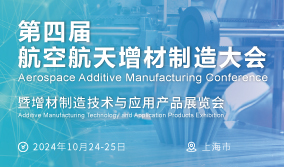铝镓氮基深紫外发光二极管光提取效率研究进展(特邀)  下载: 752次内封面文章【增强内容出版】
下载: 752次内封面文章【增强内容出版】
AlGaN-based deep-ultraviolet light-emitting diodes (DUV-LEDs) are highly demanded in environmental monitoring, food safety, solar-blind communication, and detection. Owing to their competitive advantages such as low voltage, small size, long lifespan, and, more importantly, no mercury pollution, they are regarded as the preferred ultraviolet (UV) solid light source for replacing the conventional mercury lamp. However, the current performance of DUV-LEDs cannot satisfy the requirements of industrial applications, which is primarily due to their low light-extraction efficiency (LEE). Therefore, a comprehensive review of the research progress on LEE will enable readers to comprehensively understand the key problems and the corresponding strategies, thus facilitating the further development of AlGaN-based DUV-LEDs.
AlGaN-based DUV-LEDs have been investigated since the early 21st century. Owing to significant efforts in the following decades, the highest wall-plug efficiency (WPE) of devices achieved is 15.3%, whereas that of commercial chips is lower than 6% (Fig. 1). The WPE is determined by the carrier injection efficiency (CIE), internal quantum efficiency (IQE), LEE, and device operating voltage, among which the LEE is the major bottleneck that limits the further enhancement of device performance. Three key scientific and technological issues result in low LEEs: optical polarization, optical total reflection, and optical absorption. Specifically, the active region with Al-rich AlGaN as quantum wells presents a low polarization degree, thus resulting in a large proportion of transverse magnetic (TM)-polarized light emission, which complicates light extraction from the bottom of substrates. Total reflection is resulted from the significant difference in the refractive index between adjacent materials at the interface, e.g., AlN/substrate or substrate/air. To achieve light absorption, thick p-GaN is the common choice for the capping layer, not only for hole supply but also for the formation of Ohmic contacts with conventional Ni/Au electrodes, as p-GaN can realize efficient doping more easily than p-AlGaN. However, GaN with a narrow bandgap does not allow DUV light to pass through. Consequently, the p-GaN capping layer, together with p-type electrodes, absorbs almost all the DUV light emitted upwards. Solutions to address the issues above can be summarized as follows.
First, because TM-polarized light cannot be extracted easily, the polarization degree of the quantum wells can be improved via energy-band regulation (Fig. 2). Another strategy is to reduce the size of the active region and introduce a reflector at the sidewall during device fabrication (Fig. 3).
Second, the issue of total reflection can be categorized into two types: reflection at the interface between the epilayers and that at the interface between the substrate and air. For the former, air voids are typically introduced to change the light-propagation path, thus allowing the limit of the total reflection angle to be exceeded (Fig. 4). For the latter, removing the substrate, roughening the substrate surface, or introducing encapsulation can increase the angle of the light-escape cone (Fig. 5).
Third, optical absorption can be weakened by adopting a p-type region with high DUV transmittance and p-type electrodes with high reflectivity. Efficient doping in p-AlGaN is the key breakthrough in absorption by the epilayers; in this regard, superlattice and polarization-induced doping have been proven to be effective (Fig. 6). Additionally, composite electrodes may be more suitable for industrial applications, considering their cost (Fig. 7).
AlGaN-based DUV-LEDs are intensively investigated in studies pertaining to group-Ⅲ nitride semiconductors and optoelectronic devices. Owing to the current global prohibition of mercury lamps, the development of DUV-LEDs with high WPE and their further industrial application are highly demanded. Currently, light extraction is a key technical bottleneck restricting the improvement in device performance; thus, it is extensively investigated worldwide. This paper focuses on three factors contributing to low LEEs and reviews the relevant technical innovations in recent years. In terms of optical polarization, the active region at the microscale demonstrates significant potential for the extraction of TM-polarized light and is expected to become the main aspect for future device configurations. For optical reflection, weakening the total reflection at the interface between the substrate and air may be the most effective method. Developing methods to remove substrates nondestructively or preparing high-quality AlN single-crystal substrates requires greater effort. In terms of optical absorption, studies pertaining to transparent Al-rich p-AlGaN and p-type electrodes with high reflectivity should be conducted simultaneously. New optical phenomena, such as the oscillation and coupling of photons/electrons in micro-nano photonic structures, should be investigated further. In summary, the development of AlGaN-based DUV-LEDs has progressed rapidly in the past two decades. However, the LEE must be further enhanced to satisfy the demands of commercial applications, which entails the exploration of new routes and technologies.
郎婧, 许福军, 王嘉铭, 葛惟昆, 沈波. 铝镓氮基深紫外发光二极管光提取效率研究进展(特邀)[J]. 中国激光, 2025, 52(5): 0501003. Jing Lang, Fujun Xu, Jiaming Wang, Weikun Ge, Bo Shen. Research Progress on Light Extraction Efficiency of AlGaN‐Based Deep Ultraviolet Light‐Emitting Diodes (Invited)[J]. Chinese Journal of Lasers, 2025, 52(5): 0501003.








